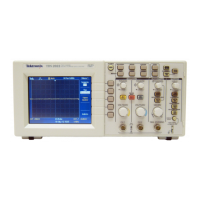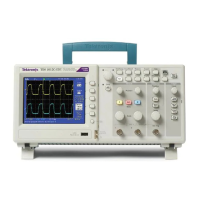TDS200/1000/2000 Series Oscilloscope Programmer Manual
3−1
Status and Events
The oscilloscope provides a status and event reporting system for the
GPIB and RS-232 interfaces. This system informs you of certain
significant events that occur within the oscilloscope.
The oscilloscope status reporting system consists of five 8-bit
registers and two queues. This section describes these registers and
components, and explains how the event handling system operates.
Registers
The registers in the event reporting system fall into two functional
groups:
H The Standard Event Status Register (SESR) and the Status Byte
Register (SBR) contain information about the status of the
oscilloscope. These registers are the Status Registers.
H The Device Event Status Enable Register (DESER), the Event
Status Enable Register (ESER), and the Service Request Enable
Register (SRER) determine whether selected types of events are
reported to the Status Registers and the Event Queue. These three
registers are the Enable Registers.
Status Registers
The Standard Event Status Register (SESR) and the Status Byte
Register (SBR) record certain types of events that may occur while
the oscilloscope is in use. IEEE Std 488.2–1987 defines these
registers.
Each bit in a Status Register records a particular type of event, such
as an execution error or service request. When an event of a given
type occurs, the oscilloscope sets the bit that represents that type of
event to a value of one. (You can disable bits so that they ignore
events and remain at zero. For more information, refer to the Enable
Registers section on page 3-4.) Reading the status registers tells
you what types of events have occurred.

